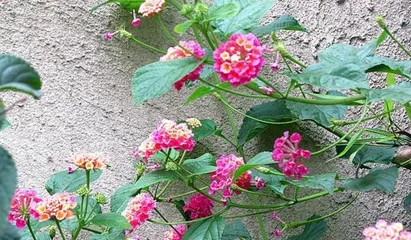Lantana is a common indoor ornamental plant, popular for its vibrant colors. However, for those new to lantana, there are often questions about its toxicity and how to care for it properly. This article will introduce lantana from various aspects such as its characteristics and care techniques to help readers better understand and care for it.

Botanical Characteristics of Lantana
Lantana, also known as Lantana camara, is an evergreen shrub or small tree. It has smooth bark and long elliptical or ovate leaves that are dark green or tinged with red. The flowers are funnel-shaped, coming in various colors such as red, pink, purple, and white, and are distributed along the branches. Lantana belongs to the Verbenaceae family and is native to southern China and Southeast Asia.
Toxicity of Lantana
Although lantana is an ornamental plant, both its flowers and leaves contain toxic components. If ingested accidentally, it can cause poisoning reactions, including nausea, vomiting, and diarrhea. It is recommended that households with young children or pets place lantana outdoors or in a high location to prevent accidents.

Care Environment for Lantana
1. Light: Lantana thrives in bright light and can be placed outdoors or in a sunny indoor spot.
2. Temperature: Lantana prefers a warm and humid environment, with an ideal growing temperature of 18°C-28°C.
3. Humidity: Lantana has high humidity requirements. During summer or dry seasons, it needs to be sprayed with water timely to maintain moisture.

Watering Lantana
Lantana is relatively drought-tolerant but still requires appropriate watering. Generally, it needs more water in summer and during dry seasons, while watering should be reduced in winter. However, it is important not to let the soil become overly moist to prevent root rot.
Fertilizing Lantana
During the growing period, lantana needs to be fertilized in a timely manner. You can choose a slow-release fertilizer and apply it every two months. When growth is vigorous in summer, it can be fertilized once a month.
Pruning Lantana
Pruning lantana is mainly done in spring, generally after the flowering period. When pruning, be sure to keep the main stem and trim the branches to 1/3 to 1/2 of their length to promote the growth of new shoots and flower buds.
Pest and Disease Control for Lantana
Common pests and diseases for lantana include leaf-tying moths, powdery mildew, etc. When pests or diseases are found, timely measures should be taken, such as spraying pesticides or manually removing affected leaves.
Propagation of Lantana
Lantana can be propagated by two methods: cuttings and sowing. For cuttings, new branches are inserted into the soil and can take root and grow into seedlings with proper care. For sowing, lantana seeds are placed in moist soil, and the appropriate temperature and humidity are maintained until germination.
Precautions for Lantana
1. Avoid direct sunlight and strong winds to prevent damage to the flowers and leaves of lantana.
2. Avoid moving the lantana frequently to avoid affecting its growth.
3. When growing lantana at home, prevent pets or young children from accidentally ingesting it by placing it in a high location.
4. If lantana is growing slowly or shows signs of disease, take timely measures to adjust the care environment.
5. If lantana coexists with other pets or plants at home, pay attention to their mutual influence and prevent the spread of pests and diseases.
Explaining the characteristics and care techniques of lantana with illustrations
Introduction to Lantana Varieties
A Discussion on the Relationship between Lantana and Traditional Chinese Medicine
Cultural Significance and Historical Origins of Lantana
Photography Techniques and Aesthetic Features of Lantana
Conclusion: With the right methods, readers can better care for lantana and allow it to shine brilliantly in their indoor spaces. At the same time, we must also understand the toxicity and precautions of lantana to avoid unnecessary losses.